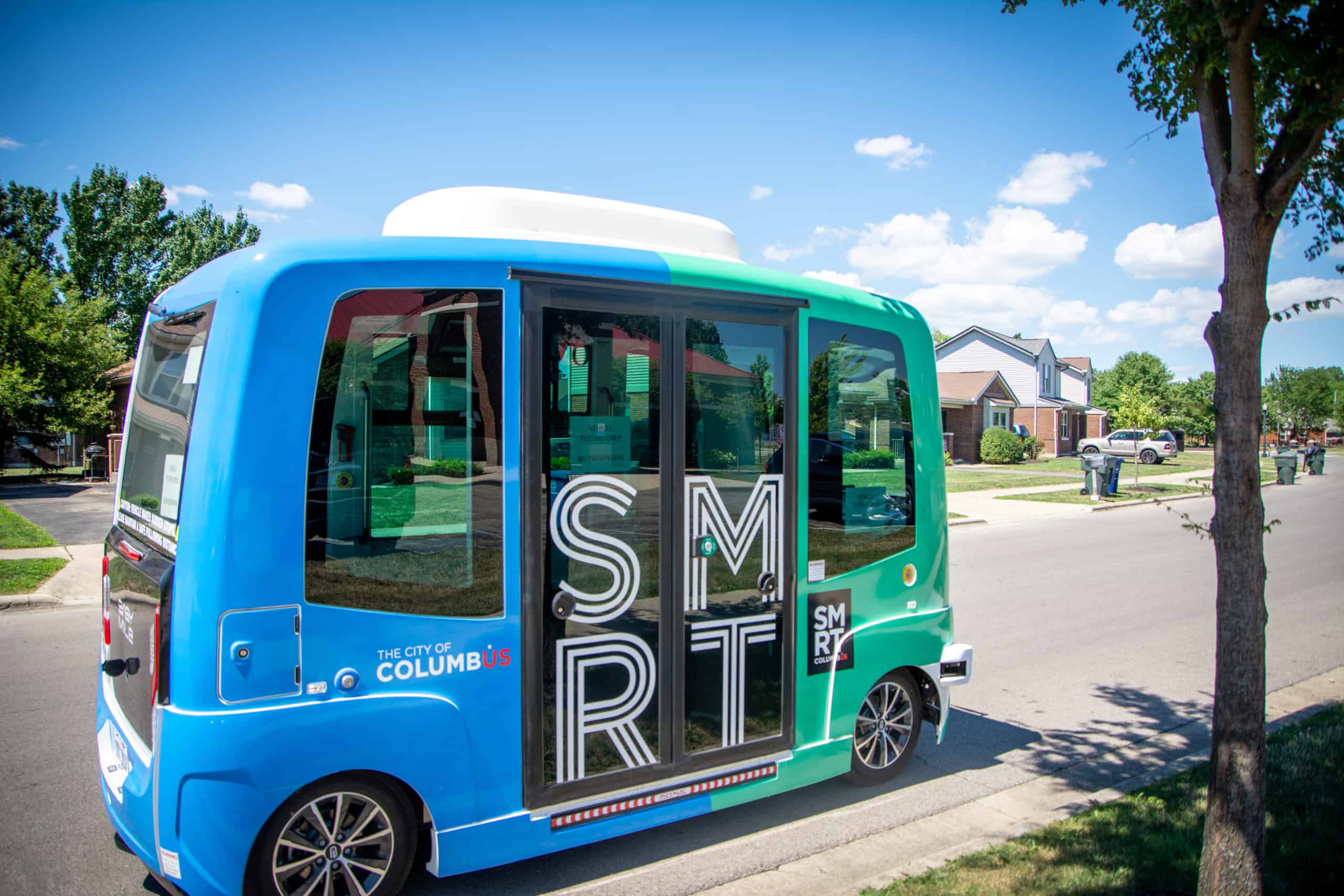
USDOT Smart City Challenge Winner in The Beta District Shares Outcomes
By The Beta District
How connected, autonomous, shared, and electric mobility innovations successfully ushered in smart city technology in the Columbus region
The City of Columbus, which anchors the southeastern end of The Beta District, recently wrapped up the US Department of Transportation (USDOT) Smart City Challenge, rolling out the Smart Columbus program of eight projects based on a future that is expected to be connected, autonomous, shared and electric. What makes this portfolio of projects different was its lofty goal to use smart city technology to address complex community issues.
“We’ve never been interested in tech for tech’s sake. These innovations serve to advance prosperity in our community, help expectant mothers access healthcare and food, distribute meals and masks to neighbors in need, and help essential workers get to work during the pandemic,” said Columbus Mayor Andrew J. Ginther.
Smart City Innovation Solving Community Needs
Here is how the City of Columbus deployed smart city solutions to address real problems many communities face:
- Smart Circuit was Ohio’s first autonomous vehicle deployment on public streets; it was used as a teaching and learning tool to expose more than 16,000 riders to the technology and informed policymakers at the state and local level. DriveOhio partnered with the Columbus Partnership, The Ohio State University, and the City of Columbus on the Smart Circuit deployment.
- The City launched the Linden LEAP to provide the nation’s first daily-operating public self-driving shuttle in a residential area. During the pandemic, the shuttle shifted gears from its original use case and transported nearly 130,000 meals and 15,000 masks from St. Stephen’s Community House to neighbors in need.
- Through prenatal trip assistance, Smart Columbus helped to address the infant mortality rate in the Columbus region by providing reliable transportation to improve birth outcomes. More than 100 pregnant individuals took over 1,000 trips to receive prenatal care or make essential trips to the grocery store and pharmacy.
- For individuals with cognitive disabilities, navigating public transportation without caregiver assistance is a major challenge. Mobility Assistance for People with Cognitive Disabilities empowers independent travel on fixed-bus routes around Columbus. The City was able to tailor the smart technology to the needs of each participant, allowing for increased comfort and independence when using COTA.
- The Pivot multimodal transportation planning app helps travelers plan and pay for trips throughout central Ohio using one or more transportation options like bus, ride-hailing, carpool, bikes, scooters, taxis, and personal vehicle or bike. This solution empowers more people to use public transit, reducing traffic congestion and allowing more residents to travel to work, school, and other opportunities.
- The City launched the connected vehicle environment to improve emergency vehicle response times and reduce speeding in school zones. 1,000 vehicles and 85 intersections were equipped with the technology to “talk” to each other and receive alerts for oncoming hazards and emergency vehicles. The Beta District and DriveOhio will soon launch a similar living lab in the US 33 Smart Mobility Corridor, which will include related District living labs called Connected Dublin and Connected Marysville.
How They Did It
Smart Columbus successfully ushered in smart city technology by focusing on four areas of mobility innovation: connected, autonomous, electric, and shared.
Projects like the Linden LEAP and Pivot used all four forms of mobility technology. Built as a fully autonomous vehicle, the Linden LEAP showcased major developments in using autonomous, electric, and connected vehicles to share rides between passengers and essential cargo like masks and food. Similarly, Pivot focuses on all four areas of mobility innovation by connecting users to multimodal route options that include connected, autonomous, electric, and shared transit options.
Prenatal trip assistance and mobility assistance for people with cognitive disabilities used app technology to link riders with shared transportation. Expecting parents enrolled in prenatal trip assistance used the Rides4Baby app to schedule their rides at no cost. Individuals with cognitive disabilities used the Wayfinder app that included personalized instructions from their caregiver to make their travel accessible and independent.
The connected vehicle environment linked participant vehicles to each other and Columbus intersections using on-board units that alert drivers to take precautionary measures when informed of oncoming safety concerns. Connected intersections also improved emergency vehicle response time and COTA efficiency through traffic signal control.
Though the Smart City Challenge concluded, the work of the Smart Columbus program will continue to make an impact on the region. The City of Columbus and The Beta District continue to grow as a hub of smart city technology. The Beta District’s living labs bring together leaders in the private sector, government, and academia to attract economic development opportunities, drive innovation, and solve real-world problems affecting the Columbus region.
To learn more, follow The Beta District on LinkedIn or contact us today

